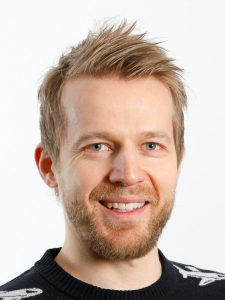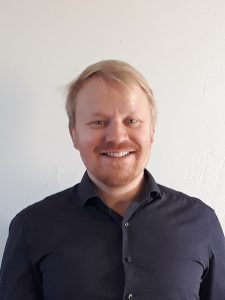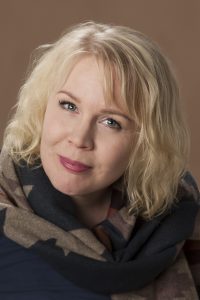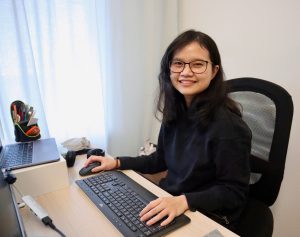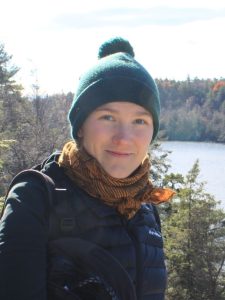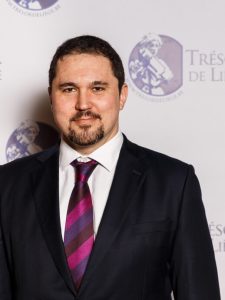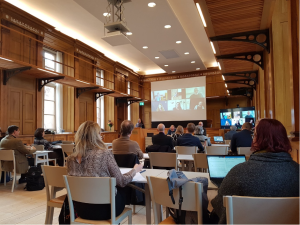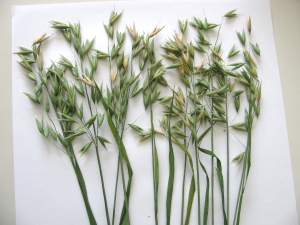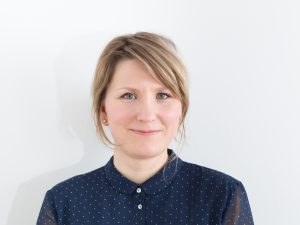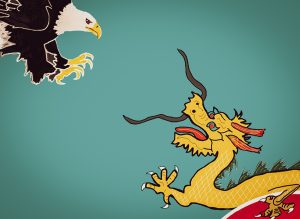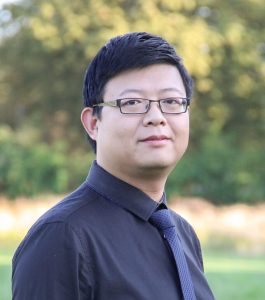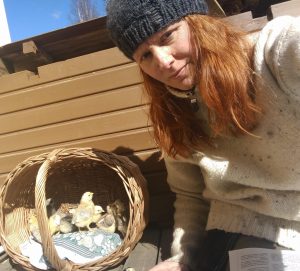
Outi Vesakoski, kollegiumtutkija, TIAS/Suomen kieli ja suomalais-ugrilainen kielentutkimus
Halusin nuorna tyttönä elää keskiajalla. Hoitaa eläimiä ja elää metsästä. Sittemmin tajusin, että mielikuva ihmisen ja luonnon harmonisesta suhteesta oli vahvasti liioiteltu ja että ihmisillä oli tapana kuolla nuorena ja sairaina.
Päädyin vain tutkimaan menneisyyttä. Otin akateemista vauhtia ekologisesta lajiutumisesta, mutta nyt tutkin kielievoluutiota siinä missä muut evoluutioekologit tutkivat biologista evoluutiota. Sovellamme BEDLAN-työryhmässä (kuva 1) evoluutiobiologian – ja geostatistiikan ja laskennallisen tutkimuksen – menetelmiä laajoihin kieliaineistoihin ja selvitämme kielievoluution muutosmekanismeja.

Kuva 1. Ks. tarkemmin www.bedlan.net
Evoluutio on muutosta
Evoluutio on muutosta populaation keskiarvossa jossain perinnöllisessä piirteessä – vaikkapa kasvin kemiallisissa ominaisuuksissa. Myös kielenmuutos on ajan myötä tapahtuva muutos puhujapopulaation kielenkäyttötavassa. Kielenmuutos tai kielievoluutio eivät siis tarkoita muutosta kenenkään yksilön tavassa käyttää kieltä elämänsä aikana.
Kielenmuutos on mekanistisesti sosiolingvistinen ilmiö – miten innovaatio leviää populaatiossa. Sillä on myös spatiaalinen ulottuvuus – murteet ja kielet ovat kielellisen vaihtelun alueellista ilmentymää. Oma kiinnostukseni on tiukasti menneisyydessä: Miten kielen alueellinen vaihtelu ja siitä seuranneet murteet (kielen mikroevoluutio) ja kielikunnat (kielen makroevoluutio) kehittyivät aikana ennen mediaa ja internettiä, aikana jolloin tarvittiin puhujapopulaatioiden fyysinen kontakti kielenpiirteiden leviämiseen.
Kielievoluutio on sekä vertikaalista että horisontaalista
Osa kielenpiirteistä periytyy vertikaalisesti, puumaisesti aikaisemmalta kohortilta seuraavalle tai populaation jakautuessa kantaryhmästä tytärryhmiin. Horisontaalitaso viittaa taas kielikontakteihin, joissa kielipiirteitä siirtyy murteesta ja kielestä toiseen: Ihmiset oppivat toisiltaan uusia äänteitä, matkivat prosodiaa eli intonaatiota ja omaksuvat uusia sanoja ja kielen rakenteita.
Vertikaalisen evoluution kuvaamiseksi biologiassa on kehitetty fylogeneettisia malleja. Ne mallintavat evoluution kahtiahaarautumista – joskin haarojen pituudesta ja tukiarvoista arvioidaan kahtiahaarautumisen ja polytomisen haarautumisen todennäköisyys. Myös kielen fylolingvistiikka perustuu biologisiin mutta kielille muokattuihin evoluutiomalleihin (Greenhill et al. 2020). Fylolingvistiikka käyttää useimmiten ns. perussanalistoja, joissa olevat merkitykset (sanat) ovat kielen pysyvintä osaa vastaten genomin ultrakonservatiivisia alueita. Aineiston ytimenä on kognaattitieto: miten merkitys sanotaan kussakin kielessä, ja ovatko eri kielten sanat samaa alkuperää keskenään eli kognaatteja.
Luiden päällä on kuitenkin lihaa, eli perityn aineksen lisäksi kielievoluutiota muokkaa lainautumalla siirtyvä aines. Fylolingvistiikassa rakennetaan parhaillaan keinoja vertikaalin ja horisontaalin evoluution yhdistämiseen. Samaa työtä tehdään myös biologisen evoluution parissa: Viime vuosina geenitekniikoiden kehittyessä biologien leuat ovat olleet koetuksella loksahtelun takia, sillä ryhmä toisensa jälkeen raportoi lajista toiseen siirtyneistä genomin osista. Horisontaalia transmissiota – aineksen lainautumista – on siis muillakin kuin bakteereilla ja kulttuureilla.
Kumulatiivista tutkimusta
Laskennallisen kielievoluutiotutkimuksen kantava piirre on kumulatiivisuus. Julkaistua aineistoa, analyysia, hypoteesia tai teoriaa testataan ja parannetaan, ja julkaistaan toinen paperi. Seuraava ryhmä jatkaa tästä. Fylogeneettisten mallien kehitys onkin ollut merkittävää viimeisen 20 vuoden aikana niin biologisen kuin onneksi kielellisen evoluution tutkimuksessa. Glottokronologian ja leksikostatistiikan kehitys sen sijaan tyssäsi 1950-luvulla niiden saaman huonon maineen vuoksi.
Entäpä populaatiogenetiikan tarjonta?
BEDLAN-työryhmän tulokulma vertikaalin ja horisontaalin kielenmuutoksen yhdistämiseen on erilainen. Kaivamme kyllä esille uralilaisen kielikunnan luurangon käyttäen sanaston ultrakonservoitunutta osaa ja fylolingvistisiä menetelmiä. Tiedämme kuitenkin, että biologiassa kontaktissa olevien ryhmien divergenssin (eriytymisen) ja konvergenssin (sekoittumisen) analysointiin ei käytetä puumalleja, vaan populaatiogenetiikan admixture-malleja. Uskon, että uusien aineistojen ja populaatiogenetiikan mallien tullaan saamaan lihat luitten päälle.
Testasimme populaatiogenetiikan lähestymistapaa Lauri Kettusen Suomen murrekartastolla (Syrjänen et al. 2016) sekä itämerensuomalaiskielten aineistoilla (Honkola et al. 2019), joista molemmat kuvaavat kielen alueellista vaihtelua aikana ennen massamediaa. Tarkoitus ei ole vain tehdä murrekarttoja, vaan painia uusin ottein kielitieteen vanhojen kysymysten kanssa.
Esimerkkinä uusien menetelmien antamista mahdollisuuksista olkoon kuitenkin murrerajojen etsintä. Isäni seminaarityö vuodelta 1972 Turun yliopiston Suomen kielen laitoksella käsitteli savolaiskiilan ja eteläpohjanmaan murteen rajaa Kortesjärvellä. Hän tutki seitsemää murrepiirrettä, ja päätyi toteamaan, että kiilan sijaintia ei voi varmasti paperille piirtää, sillä eri piirteet rajaavat murteen eri tavoin. Hän kuitenkin esitti kartan (kuva 2).
Me sen sijaan otimme käyttöön kaikki Kettusen murrekartaston 213 murrepiirrettä kaikista 525 suomen kieltä puhuvasta pitäjästä, populaatiogenetiikan mallipohjaisen STUCTURE –ohjelman sekä paikkatietomenetelmät tuloksen visualisoimiseen. Kysyimme ohjelmalta, että millainen on maan murrejako, jos murteita on 2, 3, 4…8. Vastauksena oli kullekin pitäjälle tuotettu frekvenssiarvo. Kuva 2 kertoo Etelä- ja Keski-Pohjanmaan pitäjien kuulumisesta K=8 klusteroinnissa eteläpohjanmaahan (oranssi), keskipohjanmaahan (sininen) ja savolaismurteisiin (vihreä). Populaatiogenetiikan klusterointimenetelmät eivät oleta tarkkoja rajoja populaatioiden välille, vaan antavat todellisen kuvan tilanteesta: savolaisuus, keskipohjalaisuus ja eteläpohjalaisuus esiintyvät eri vahvuisina eri pitäjissä.

Kuva 2. Vasen: Savolaiskiilan sijainnista (pisteviivoitettu alue) Risto Vesakosken vuoden 1972 seminaarityössä. Keskimmäiset kuvat: Savolaiskiilan sijainti Syrjänen et al. (2016) mallipohjaisen ryhmittelyanalyysissa. Oikea kuva: Analyysi tuottaa kullekin pitäjälle frekvenssiluvun kuuluvuudesta eri murrealueisiin. Aineisto, analyysi ja tulkinta löytyvät artikkelista. https://bedlan.net/publications/
Uusi tulokulma, uudet mahdollisuudet
Voimme nyt mitata murteiden välistä divergenssiä (Honkola et al. 2018) ja konvergenssia (Santaharju et al. lähetetty käsikirjoitus) ja etsiä niille syitä. Vihdoin voimme testata tilastollisesti miten hallinnolliset, kulttuuriset ja luonnonmaantieteelliset tekijät ovat muokanneet murremaisemaa ja populaatioiden välisiä kontakteja. Parasta on, että kieliaineisto on pitäjäkohtaisina frekvensseinä yhteismitallinen Suomen geneettisen aineiston kanssa (Kerminen et al. 2021), mikä mahdollistaa ihan uudet lähestymiset ihmisen diversiteetin tutkimukseen.
Oleellista on, että populaatiogenetiikan menetelmät ovat sovellettavissa myös kielikuntien tutkimiseen. Tämä on mahdollista juuri nyt, kun uusia typologisia aineistoja on tulossa ulos. Zürichin yliopisto julkaisi juuri uuden version AutoTyp –aineistostaan, maailman kielten uusi typologinen Grambank-aineisto on arvioinnissa Science-lehdessä (Turun yliopisto on tietenkin mukana) ja maaliskuussa julkaistaan uusi uralilainen typologinen aineistomme UraType (kuva 3).

Kuva 3. Esimerkkejä UraTyp-aineiston kysymyksistä (Moilanen et al. 2021).
Uralilainen yhdistelmä
Seuraava vaihe onkin yhdistää tunnetut sanastolliset kielikontaktit (de Heer et al. 2022) typologisiin kontakteihin ja vertikaalisen evoluution luurankoon. Kokeilimme mallintaa uralilaisen kielikunnan sisäisiä kontakteja populaatiogenetiikan tulokulmasta. Parhaiten aineistoon sopi malli, joka jakoi kielikunnan neljään eri komponenttiin (kuva 4). Nämä ”kontaktialueet” yhdistävät evolutiivisesti eronneita uralilaisten kielten haaroja.
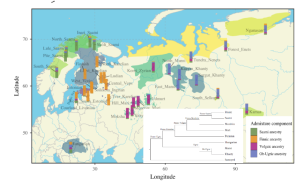
Kuva 4. UraTyp aineiston fast-STRUCTURE analyysi. Aineisto ja analyysi selitetään tarkemmin Norvik et al. 2022, Journal of Uralic Linguistic (ensimmäinen numero julkaistaan maaliskuussa). Uralilaisten kielten kartat, sites.utu.fi/URHIA. Perinteinen puumalli: Korhonen 1981.
Kerettiläisyyttä vai ei?
On selvää, että kielenmuutos ei ole täsmälleen samanlainen prosessi kuin biologinen evoluutio. Leino et al. (2020) kirjankappaleessa perustelemme, miksi erilaisuus ei kuitenkaan estä tarjoilemasta ideoita ja aineistoja tieteiden välisen raja-aidan yli, ja avaamasta uusia mahdollisuuksia kielievoluution ja ihmisen kielellisen menneisyyden ymmärtämiseen.
Lähteet:
Greenhill SJ, Heggarty P, & Gray RD. 2020 Bayesian Phylolinguistics. In Janda RD, Joseph BD, & Vance BS (Eds) The Handbook of Historical Linguistics, Volume II, pp. 226–253. Wiley-Blackwell: New Jersey.
Honkola, T., Santaharju, J. , Syrjänen, K. & Pajusalu, K. 2019: Clustering lexical variation of Finnic languages based on Atlas Linguarum Fennicarum. Linguistica Uralica 55:3. https://dx.doi.org/10.3176/lu.2019.3.01
Honkola, T., Ruokolainen, K., Syrjänen, K., Leino U, Tammi, I, Wahlberg, N. & Vesakoski, O. 2018. Evolution within a language: Environmental differences contribute to divergence of dialect groups. BMC Evolutionary Biology. 18:132. https://doi.org/10.1186/s12862-018-1238-6.
Kerminen S., Cerioli N., Pacauskas D., ym. (2021) Changes in the fine-scale genetic structure of Finland through the 20th century. Plos Genetics 17, e1009347.
Leino, U., Syrjänen, K. & Vesakoski, O. 2020: Linguistic change and biological evolution. Ryan Nefdt, Carita Klippi & Bart Karstens (eds.), Interdisciplinary Perspectives on the Philosophy and Science of Language. Palgrave Macmillan.
Moilanen, U., Pesonen P., Norvik, M., Saipio, J., Vesakoski, O., Immonen, V. & Onkamo, P. 2021: New tools for studying Finnish archaeology and Uralic languages. Antiquity 95(323), E30. https://doi.org/10.15184/aqy.2021.113.
Syrjänen, K.*, Honkola, T.*, Lehtinen, J., Leino, A. & Vesakoski, O. (2016) “Applying population genetic approaches within languages: Finnish dialects as linguistic populations”, Language Dynamics and Change 6: 235-283. DOI: 10.1163/22105832-00602002.
